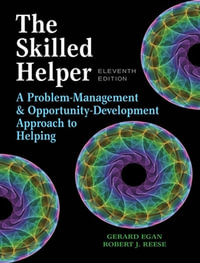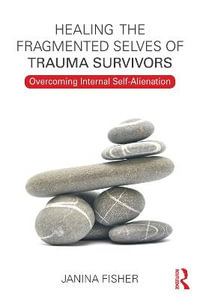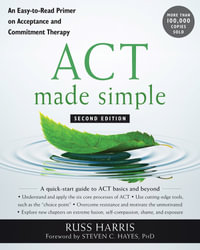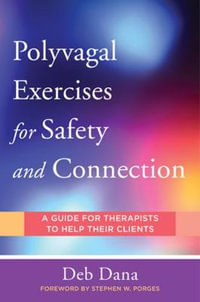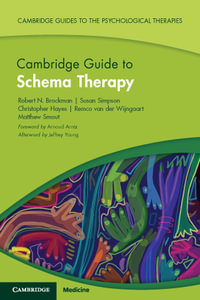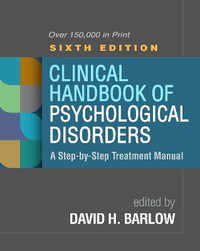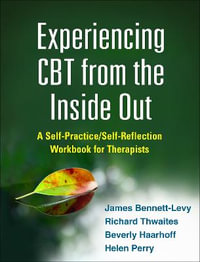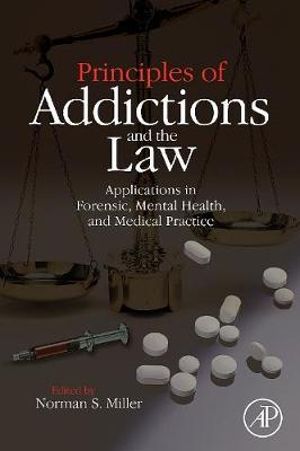
Principles of Addictions and The Law
Applications in Forensic, Mental Health and Medical Practice
By: Norman S. Miller (Editor)
Hardcover | 26 February 2010
At a Glance
372 Pages
23.11 x 15.49 x 2.54
Hardcover
$409.90
or 4 interest-free payments of $102.47 with
orAims to ship in 10 to 15 business days
*Focused primarily on alcohol and drug addictions
*Case studies and landmark cases are included to illustrate the role of alcohol/drugs in legal decisions (e.g., the Exxon Valdez case)
*Brief overview of legal system and drug courts will be useful to clinicans, lawyers, administrators, and other professionals
| Contributors | p. xv |
| Preface | p. xvii |
| The Basic Legal Structure and Organization Anna Baumgras | p. 1 |
| Introduction: Sources of Law | p. 1 |
| The Judicial Branch | p. 2 |
| Civil Law Versus Criminal Law | p. 3 |
| Criminal Law | p. 4 |
| Defenses to Crimes | p. 4 |
| Civil Law | p. 6 |
| Offenses Related to Addictions | p. 7 |
| Basic Constitutional Rights | p. 9 |
| The Bill of Rights | p. 9 |
| The Legislative Branch | p. 11 |
| Statutes Regulating Addictions | p. 12 |
| Conclusion | p. 16 |
| References | p. 16 |
| Addictions and the Law Norman | p. 17 |
| Mens Rea and Capacity | p. 18 |
| Definition and Relevance to Addictions | p. 18 |
| Legal Precedent | p. 19 |
| Addictive Disease | p. 19 |
| Intoxication and Addiction | p. 19 |
| Legal Precedent | p. 20 |
| Criminal Law | p. 20 |
| Insanity Defense | p. 20 |
| Legal Precedent | p. 20 |
| Criminal Competence | p. 21 |
| Civil Competence | p. 21 |
| Alcohol and Drug Use and Addiction as Risk Factors in Crime and Criminal Intent | p. 21 |
| Civil Law in Selected Populations | p. 22 |
| Child Abuse and Custody | p. 22 |
| Sexual Offenders | p. 23 |
| Malingering | p. 23 |
| Corrections and Coerced Treatment | p. 24 |
| Goals of Treatment | p. 24 |
| Diversion | p. 24 |
| Prevalence of Alcohol and Drug Disorders during Incarceration | p. 25 |
| Prevalence of Suicide and Alcohol and Drug Disorders during Incarceration | p. 25 |
| Legal Precedent | p. 25 |
| The Death Penalty and Addictions | p. 26 |
| Involuntary Hospitalization | p. 26 |
| Malpractice | p. 26 |
| Competence to Sign into an Institution | p. 27 |
| Informed Consent | p. 27 |
| Injury to a Third Party by Alcoholics and Drug Addicts | p. 28 |
| Adolescents and Juvenile Court and Addictions | p. 29 |
| Prevalence of Alcohol and Drug Use and Disorders in Juvenile Populations | p. 29 |
| Legal Precedents | p. 30 |
| Forensic Pathology and Drug Testing | p. 30 |
| Forensic Pathology | p. 30 |
| Drug Testing | p. 30 |
| Medical Records | p. 30 |
| Rehabilitation Acts | p. 31 |
| Conclusion | p. 31 |
| References | p. 32 |
| Physician Practice of Addictions in Medical Practice | p. 37 |
| Introduction | p. 37 |
| Clinical Prevalence | p. 38 |
| Prevalence of Alcohol and Drug Dependence | p. 38 |
| in the General Population | |
| Prevalence-of Multiple Drug Use and | p. 38 |
| Dependence in Treatment | |
| Prevalence in the Medical Population | p. 39 |
| Prevalence in Family and Workplace Populations | p. 39 |
| Clinical Diagnosis | p. 39 |
| Risk Assessment by Physicians | p. 40 |
| Physical Examination and Laboratory Testing | p. 40 |
| Clinical Course and Pathophysiology | p. 41 |
| Clinical Comorbidity | p. 41 |
| Treatment of Medical Disorders Associated with Alcohol and Drug Use and Addiction | p. 41 |
| Physician Intervention | p. 41 |
| Requirements of Physicians for Diagnosing and Treating Addictive Disease | p. 42 |
| Abstinence-Based Method | p. 43 |
| Improving Treatment for Alcoholism | p. 44 |
| Why Physicians are Unprepared to Treat | p. 45 |
| Drug-and Alcohol-Related Disorders | |
| Recommendations for Improving Education Training | p. 46 |
| Research Studies on Medical Education in the Area of Addictive Medicine | p. 47 |
| Conclusion | p. 49 |
| References | p. 49 |
| Medical Licensure and Credentialing | p. 55 |
| Introduction | p. 55 |
| Peer Review | p. 57 |
| Immunity | p. 57 |
| Confidentiality | p. 59 |
| Physician Profile Databases | p. 60 |
| Medical Licensing Boards | p. 64 |
| Judicial Oversight | p. 65 |
| Federation of State Medical Boards | p. 67 |
| The Model Policy | p. 67 |
| Compulsory Reporting | p. 67 |
| Examination/Evaluation | p. 68 |
| Grounds for Action | p. 68 |
| Disciplinary Action against Licensees | p. 68 |
| Impaired Physicians | p. 68 |
| The Impaired Healthcare Professional | p. 69 |
| Identifying the Problem | p. 69 |
| Ethical Responsibility and Legal Risk | p. 69 |
| Confidentiality versus Disclosure | p. 71 |
| Physician Health Program (PHP) | p. 72 |
| References | p. 72 |
| Privacy within the First Decade of the Twenty-First Century | p. 75 |
| Introduction | p. 75 |
| Codes of Conduct for Privacy | p. 76 |
| Patient Access to Medical Records | p. 76 |
| Electronic Health Records | p. 77 |
| Update from the Privacy Commissioner | p. 78 |
| Practice Audits | p. 79 |
| Conclusion | p. 79 |
| References | p. 80 |
| Bioethical Decisions, Substance Use and Addiction: The Clinical Context | p. 81 |
| Introduction | p. 81 |
| Substance Use, Addiction and Informed Consent | p. 82 |
| Pregnancy, Substance Use and Addiction | p. 83 |
| The Effects of Substance Use on the Fetus | p. 83 |
| Legal Responses to Maternal Substance Use during Pregnancy | p. 85 |
| Ethical Issues for the Healthcare Provider | p. 86 |
| Liver Transplantation | p. 87 |
| Treating Pain | p. 89 |
| Conclusion | p. 92 |
| References | p. 92 |
| Domestic Public Health Law | p. 97 |
| Introduction | p. 97 |
| Controlled Substances | p. 98 |
| Harrison Narcotics Act of 1914 | p. 98 |
| Federal Bureau of Narcotics and Henry Anslinger | p. 99 |
| Food and Drug Administration (FDA) | p. 102 |
| Food, Drug and Cosmetic Act of 1938 | p. 103 |
| Prescription Drug User Fee Act of 1992 (PDUFA) | p. 103 |
| Federal Agency and Policy: Supply and Demand | p. 105 |
| Reducing the Supply of Illegal Drugs in the United States | p. 105 |
| The Other Side of the Coin: Reducing Demand for Drugs in the United States | p. 107 |
| Conclusion | p. 110 |
| References | p. 110 |
| International Law, Public Health and Addiction | p. 113 |
| What is International Law? | p. 114 |
| International Law in the Field of Addiction | p. 115 |
| Addiction: The Perspective of Drug Control | p. 115 |
| International Organizations and the Infrastructure of Drug Control | p. 119 |
| Addiction: The Perspective of Public Health | p. 121 |
| Why is International Law Relevant to Addiction Practitioners? | p. 124 |
| Physicians and Scientists | p. 125 |
| Lawyers and Judges | p. 126 |
| Social Workers, Community Activists, Policymakers and Sufferers of Addiction | p. 130 |
| Addiction and Human Rights | p. 130 |
| International Advocacy and the Framework Convention on Tobacco Control | p. 131 |
| References | p. 132 |
| Medical Malpractice | p. 135 |
| Overview of Medical Malpractice Law | p. 135 |
| The Essential Elements | p. 135 |
| The Standard of Care: Duty and Breach | p. 135 |
| Application to Addiction Cases | p. 136 |
| Standard of Care and Breach | p. 136 |
| Causation of Damages | p. 143 |
| Experts | p. 146 |
| Informed Consent | p. 146 |
| Defenses | p. 149 |
| Comparative Negligence | p. 149 |
| Assumption of Risk | p. 152 |
| Statute of Limitations | p. 154 |
| References | p. 156 |
| Expert Witness in Civil and Criminal Testimony | p. 159 |
| Expert Qualifications | p. 159 |
| Federal Rule of Evidence 702 | p. 159 |
| Federal Rule of Evidence 703 | p. 160 |
| Role of Experts | p. 161 |
| Duties of Experts | p. 161 |
| Mens Rea and Capacity | p. 162 |
| Expert Role in Criminal Cases | p. 162 |
| Medical Malpractice | p. 163 |
| Expert Role in Medical Malpractice Cases | p. 163 |
| Medical Experts | p. 163 |
| Admissibility of a Medical Expert | p. 165 |
| Damage Experts | p. 165 |
| Conclusion | p. 166 |
| References | p. 166 |
| Forensic Considerations in Blood Alcohol Evaluation | p. 167 |
| Introduction | p. 167 |
| Alcoholism | p. 167 |
| References | p. 174 |
| Pharmacological Drug Effects on Brain and Behavior | p. 177 |
| Introduction | p. 177 |
| Influence of Neurobiology and Neurotransmitters | p. 178 |
| Molecular Mechanisms and Neurobiological Consequences of Drug and Alcohol Use | p. 179 |
| Performance-Enhancing Drugs | p. 184 |
| Conclusion | p. 188 |
| References | p. 188 |
| Forensic Toxicology | p. 193 |
| Introduction | p. 193 |
| Postmortem Forensic Toxicology | p. 194 |
| Human Performance Forensic Toxicology | p. 195 |
| Forensic Urine Drug Testing | p. 195 |
| Standard Operating Procedural Manual | p. 196 |
| Chain of Custody | p. 196 |
| Dual-Testing Philosophy | p. 196 |
| Sample Preparation | p. 197 |
| Liquid-Liquid Extraction | p. 197 |
| Solid-Phase Extraction | p. 198 |
| Detection Techniques | p. 198 |
| Immunoassay | p. 198 |
| Gas Chromatography | p. 199 |
| Liquid Chromatography | p. 199 |
| Mass Spectrometry | p. 199 |
| Method Validation | p. 200 |
| References | p. 201 |
| Forensic Psychiatry, Substance Use and Mental Illness | p. 203 |
| Introduction | p. 203 |
| Epidemiology | p. 203 |
| Basic Legal Concepts and Statutes | p. 205 |
| Affirmative Defense Statutes | p. 211 |
| Inherent Conflict Between Free Will, Public Safety and the Disease Concept and Substance Addiction | p. 213 |
| Free Will | p. 213 |
| Disease Concept | p. 214 |
| The Conflict between Free Will, Public Safety and the Disease Model | p. 214 |
| Criminal and Civil Competence for the Addicted | p. 216 |
| Competence to Stand Trial | p. 217 |
| Civil Competencies | p. 218 |
| Treatment Issues for this Population in Different Clinical Settings | p. 219 |
| Clinical Assessment in Forensic Settings | p. 219 |
| Treatment in Forensic Settings | p. 219 |
| Civil Commitment | p. 220 |
| Correctional Settings, Diversion and Coerced Treatment, Community Reentry and Reintegration | p. 221 |
| Conclusion | p. 223 |
| References | p. 223 |
| Legal Rights of Fetuses and Young Children | p. 229 |
| Introduction | p. 229 |
| Impact of Prenatal Drug Exposure on the | p. 230 |
| Developing Fetus | |
| Impact of Substance Abuse on Children | p. 231 |
| Need for and Access to Treatment | p. 231 |
| Rights of Fetuses Generally | p. 232 |
| Rights of Fetuses: Civil Child Protective Proceedings | p. 234 |
| Response to Report | p. 235 |
| Courts' Responses to Child Protection Actions on Behalf of Fetuses | p. 236 |
| Courts' Responses to Substance Exposed Neonates | p. 237 |
| Other Civil Remedies | p. 238 |
| Public Health Approaches | p. 239 |
| Criminal Charges | p. 240 |
| Search and Seizure and Consent | p. 241 |
| Charges that Can be Sustained | p. 242 |
| Charges that Cannot be Sustained | p. 244 |
| Access to Substance Abuse Treatment Records | p. 245 |
| Access to Records and HIPAA | p. 247 |
| Conclusion | p. 248 |
| References | p. 249 |
| Criminal Populations and Substance Abuse | p. 253 |
| Introduction | p. 253 |
| Interventions for Substance Abuse in Correctional Facilities | p. 254 |
| Correctional Treatment Programs | p. 254 |
| Legal Standards for Substance Abuse Treatment in Correctional Facilities | p. 255 |
| Judicial and Statutory Approaches to | p. 256 |
| Civil Commitment for Substance Use Substance Abuse Disorders | p. 256 |
| Drug Courts | p. 257 |
| State and Federal Drug Laws | p. 259 |
| Laws Regulating Drinking and Driving | p. 261 |
| Information Sharing Between the Justice and Treatment Systems | p. 262 |
| International Approaches to Criminal Populations and Substance Abuse | p. 264 |
| Legal Foundations for Treatment Provided in Justice Settings | p. 265 |
| Points of Intervention for Offender Drug Treatment | p. 266 |
| Conclusion | p. 269 |
| References | p. 270 |
| Legal Authority, Medical Basis and Public Policy for Controlling Scheduling Controlled Substances | p. 277 |
| Overview of Controlling and Scheduling Drugs and Other Substances | p. 277 |
| Legal Authority to Control Substances: Standards and Schedules | p. 278 |
| Federal Rules and Regulations for Controlled Substances | p. 278 |
| State Statutes and Regulations for Controlled Substances | p. 279 |
| Drug Enforcement Administration and Food and Drug Administration | p. 280 |
| Immediate Precursors | p. 280 |
| Temporary Scheduling to Avoid Imminent Hazards to Public Safety | p. 280 |
| Abuse Potential | p. 281 |
| Evaluation of Drugs and Other Substances | p. 281 |
| Factors Determinative of Control or Removal from Schedules | p. 282 |
| Legislative Intent for Potential for Abuse | p. 283 |
| Levels of Drug Control and Scheduling | p. 284 |
| Medical Basis for Potential of Abuse | p. 287 |
| FDA Role | p. 287 |
| Public Policy for Controlling and Scheduling Substances | p. 288 |
| References | p. 290 |
| Use of Addictive Medications and Drugs in Athletics | p. 293 |
| Introduction | p. 293 |
| Historical Perspective | p. 296 |
| Overview | p. 299 |
| Factors Influencing Athletes Use of | p. 299 |
| Substances | |
| Performance-Enhancing Drugs | p. 300 |
| Anabolic Steroids | p. 300 |
| Central Nervous System Stimulants | p. 305 |
| Erythropoietin and Blood Doping | p. 313 |
| Alcohol | p. 314 |
| References | p. 315 |
| Class Action to Protect Against Discrimination of Individuals with Alcohol and Drug Addictions | p. 323 |
| Introduction | p. 323 |
| Class Action as a Thesis to Promote Change for Discriminated Members | p. 323 |
| History of Mixed Success in Class Action Litigation for Addictions | p. 324 |
| Unfair and Lethal Discrimination against Classes of Addicted Individuals Evident in Government Policy | p. 325 |
| Discriminatory Policies and Laws against Cigarette Smokers | p. 325 |
| Addiction | p. 326 |
| Addiction is a Disease Defined as a Medical Disorder and by Legal Status | p. 326 |
| Addiction as a Medical Disease | p. 327 |
| Class Actions | p. 327 |
| Class Action Litigation is an Effective Strategy to Protect against Discriminatory Policy and Laws | p. 327 |
| History of Tobacco Cases Demonstrate Powerful and Unethical Forces against | |
| Traditional Litigation | p. 328 |
| Form a Discriminated Class of Harmed Individuals with Small Claims to Make Class | |
| Tight and Class Action Superior | p. 329 |
| Public Support for a Class Consisting of Alcoholics and Drug Addicts Suffering from a Disease | p. 329 |
| Class Defined | p. 330 |
| Numerosity and Commonality: Prevalent Disorders | p. 331 |
| Define Damages and Fraud Where Individual Issues do not Predominate and Class Action is Superior to Traditional Litigation for a Discriminated Class | p. 332 |
| Core Legal Theories and Causality | p. 332 |
| Specific Areas of Class Action Litigation | p. 333 |
| Liability for Fraudulent Marketing of in Medically-Related Cases Controlled Substances: Litigation against Purdue Pharma | p. 334 |
| Class Certification Upheld | p. 334 |
| Class Certification Denied | p. 335 |
| Medical Monitoring of a Class | p. 335 |
| Class Action is Superior to Other Methods | p. 335 |
| Superiority of Class Action Frequently Determines Success of Litigation | p. 336 |
| Superiority can be a Single Forum | p. 337 |
| Predominance Requirement Depends on Individual Issues for Causes in Addiction | p. 338 |
| Individual Interests in Controlling Individual Suits in Mass Tort Litigation | p. 339 |
| Common Knowledge Theory | p. 339 |
| Conclusions from Class Actions in Addiction | p. 340 |
| Legacies from Tobacco, Opiate Medications and Alcohol | p. 340 |
| The Road Less Traveled | p. 341 |
| References | p. 341 |
| Index | p. 345 |
| Table of Contents provided by Ingram. All Rights Reserved. |
ISBN: 9780124967366
ISBN-10: 0124967361
Published: 26th February 2010
Format: Hardcover
Language: English
Number of Pages: 372
Audience: Professional and Scholarly
Publisher: ACADEMIC PR INC
Country of Publication: US
Dimensions (cm): 23.11 x 15.49 x 2.54
Weight (kg): 0.77
Shipping
| Standard Shipping | Express Shipping | |
|---|---|---|
| Metro postcodes: | $9.99 | $14.95 |
| Regional postcodes: | $9.99 | $14.95 |
| Rural postcodes: | $9.99 | $14.95 |
How to return your order
At Booktopia, we offer hassle-free returns in accordance with our returns policy. If you wish to return an item, please get in touch with Booktopia Customer Care.
Additional postage charges may be applicable.
Defective items
If there is a problem with any of the items received for your order then the Booktopia Customer Care team is ready to assist you.
For more info please visit our Help Centre.
You Can Find This Book In
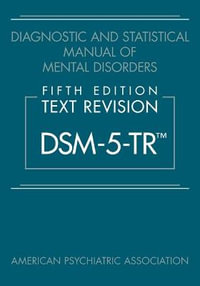
Diagnostic and Statistical Manual of Mental Disorders 5/e TR (DSM-5-TR)
Diagnostic and Statistical Manual of Mental Disorders
Hardcover
RRP $347.00
$307.75
OFF

Intentional Interviewing and Counseling
10th Edition - Facilitating Client Development in a Multicultural Society
Paperback
RRP $139.95
$115.90
OFF
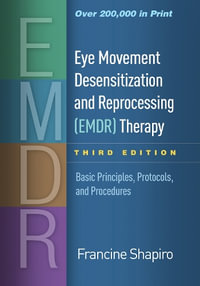
Eye Movement Desensitization and Reprocessing (EMDR) Therapy
Basic Principles, Protocols, and Procedures 3rd Edition
Hardcover
RRP $161.00
$138.00
OFF
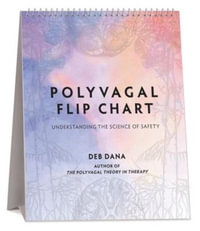
Polyvagal Flip Chart
Understanding the Science of Safety (Norton Series on Interpersonal Neurobiology)
Paperback
RRP $57.95
$38.50
OFF

The Book You Wish Your Parents Had Read (and Your Children Will Be Glad That You Did)
THE #1 SUNDAY TIMES BESTSELLER
Paperback
RRP $24.99
$21.75
OFF

The Mindful Self-Compassion Workbook
A Proven Way to Accept Yourself, Build Inner Strength, and Thrive
Paperback
RRP $59.99
$47.75
OFF
This product is categorised by
- Non-FictionMedicineOther Branches of MedicineClinical Psychology
- Non-FictionPsychologyCognition & Cognitive Psychology
- Non-FictionPsychologyChild & Developmental Psychology
- Kids & Children's BooksEducational MaterialCitizenship & Social Education Educational Material
- Non-FictionMedicineOther Branches of MedicineForensic Medicine
- Non-FictionMedicineMedicine in GeneralMedicolegal Issues


